Archive for the ‘Brain Training’ Category
January 15, 2009
The Platform: YOGA and the BRAIN, Free Teleseminar Jan 26, 2009
The Twitter: It’s time to grow Neural real estate, not grey hairs!
The Big Idea: Scientific research shows that yogic movement meditation changes the brain!
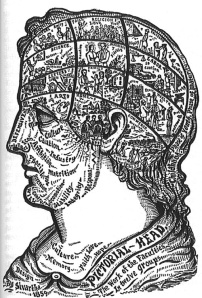
My thought for the new year? Let mounting stress and uncertainty be opportunities to let yourself learn NEW WAYS TO CALM DOWN — and change your brain for the better!!!!!
Here at GGI, 2009 is off and running with free teleseminars on YOGA and the BRAIN! (more…)
Tags:Brain Fitness, Brain Restoration, Meditation and the Brain, Neuroplasticity, Neuroscience Core Concepts, Reducing Stress, SpaceSuit Yoga, The George Greenstein Institute and the brain, Yoga and the Brain, Yoga and the GABA studies, Yoga and the NIH
Posted in Advances in Neuroscience, Balancing the Brain Hemispheres, Brain Maps, Brain Training, Meditation, Mind/Brain Training, Neural Networks, SpaceSuit Yoga, Traumatic Brain Injury, Uncategorized, Whole-Brain Neuroscience, Yoga | 2 Comments »
January 7, 2009
Greetings Somanauts!
Here’s the new year’s update on the free GGI teleseminar: Yoga and the Brain!
First to say, the teleseminar is filling up with folks from different countries, proving the global interest in movement meditation and the brain!
With that in mind, the teleseminar is scheduled for the following dates and times below:
U.S. and U.K. residents:
Date: January 12, 2009
Time: 9 a.m – 10 a.m., Pacific Standard Time
For Australian and AsiaPacific Residents:
Date: January 13, 2009
Time: 10 a.m. (Sydney time zone)
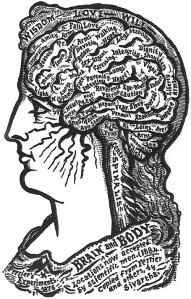
A recap of the teleseminar goal and content:
Who should take this teleseminar? Anyone working with, or interested in, the neurological effects of restorative or high performance training including allied health workers, public policy makers, physicians and physician assistants, psychiatrists, ADHD specialists, social entrepreneurs in health and wellness, and of course, all members of the somatic, yoga, meditation, athletic and martial arts community. (Global citizens please note: The teleseminar will be conducted in English.)
What will I learn: This teleseminar introduces the core neuroscience concepts central to any top quality training program that teaches yoga and movement meditation. Concepts include: neuroplasticity, immersive attention, somasensory integration and more.
What are the key benefits of this teleseminar?: You will leave the teleseminar energized and armed with a grand pattern of understanding how neurologically important your work is as a proponent of yoga movement and meditation. Seminar discussion is particularly valuable for anyone dedicated to improving the development and integration of brain, body and mind.
How do I join this free teleseminar? Simply write to 2docgee@gmail.com with the word “yes, ” along with your state and country of residence. Follow up information will be sent to you at your given email address.
Looking forward to your participation!
May the Breath Be With You!
Dr. G., Founding Director, The George Greenstein Institute, creating a sustainable future by coaching bodies, brains and minds!
The George Greenstein Institute is dedicated to serving the public good, by offering up to date, brain-based education in health, creativity and performance world wide.
Tags:Exercise and the Brain, Meditation and Neuroplasticity, Neuroplasticity, Neuroscience, SpaceSuit Yoga teleseminar, Yoga and the Brain, Yoga and Wholistic Health
Posted in Advances in Neuroscience, Ancient/Future Technologies of the Body, Brain, Brain Technologies, Brain Training, Breath, Cognitive Science, Consciousness, Contemplative Education, Mind/Brain Training, neuroleadership, Neuroplasticity, Neuroscience, SpaceSuit Yoga, Uncategorized, Whole-Brain Neuroscience, Yoga | Leave a Comment »
December 29, 2008
The Platform: The New Brain Ecology: Connect Body, Brain and Mind!
The Twitter: SpaceSuit Yoga.com is migrating to another blogisphere!
The Big Idea: Create a trustworthy go-to space where cogent commentary and top quality coaching take brain, body and mind fitness to the next level!
The new year is almost upon us and with that, SpaceSuitYoga will soon be migrating to the newly renovated, bodiesinspace.com.
Bodiesinspace.com is being designed to help you navigate the complex world of neuroscience, neuro-plasticity, brain fitness and brain injury interconnected with the health of the body and mind. Look for our special reports by the Virtual Visionary Tobey Crockett illuminating indigenous perspectives on aging along with SpaceSuit Yoga and guest contributer columns on mediation practice and art for the brain. Prepare to applaud the winners of the 1st Bodinesinspace award for brilliance in social entrepreneurship and design! And check out our new coaching and teleseminar programs specializing in collaborative partnering in managing health, creativity practices and best strategies for performance!
Finally, come 2009, you’ll be able to surf through text, image and podcasts on the new interactive zine site!
So somanauts and neuroleaders, suit up, prep your multi-sensory antennae and get ready to map out
BETTER BRAINS
AGELESS BODIES
SPACIOUS MINDS
In the meantime, remember to “Plug In.” Host a Brain Awareness Week on Facebook, on your site, at your school, in your health center, place of worship or office.
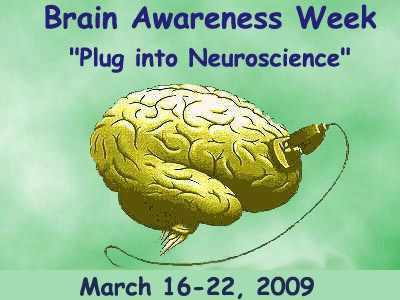
Wishing everyone a healthy new year, one marked by vision, imagination, integrity and insight!
Dr. M. A. Greenstein a.k.a. Dr. G.
The George Greenstein Institute, creating a sustainable future by coaching bodies, brains and minds!
Tags:Bodiesinspace Award, bodiesinspace.com, Body Maps, Brain Awareness Week, Brain Maps, MInd Maps, Neuroplasticity, SpaceSuit Yoga, The New Brain Ecology, Traumatic Brain Injury
Posted in Advances in Neuroscience, Art and the Brain, Body Ecology, Brain Ecology, Brain Training, Meditation, Mental Practice, Mind over Matter, Mind/Brain Training, Mindfulness Practice, neuroleadership, Neuroplasticity, Neuroscience, Somanauts, Somatic, SpaceSuit Yoga, Traumatic Brain Injury, Whole-Brain Neuroscience | 1 Comment »
December 14, 2008
Welcome back to the discussion on visual meditation and mandalas!
Within major wisdom traditions of meditation, be they spiritual, religious or scientific brain and health training programs, there is typically the path of education or entrainment. Meditation or mental practice, after all, is not the default mode of a mature human central nervous system that is wired for turbo”different detecting” in space/time! Remember, difference detecting is that old survival mechanism that helps all mammals determine: Will that eat me or will I eat that? Is it safe to sleep here or is it not? And now in our modern jungle version where we communicate and travel at the speed of light, our human brains and central nervous systems race faster and faster to keep up with the deluge of information, images, and experiences we encounter day after day!
It makes sense that in response to or retreat from cultures drunk on speed, we would turn to “best practices” of earlier times, namely the ancient art and science of meditation, to help us slow down, to assist us in creating equilibrium in our bodies and in our lives. The good news is that at the dawn of the 21st century, meditation traditions practiced around the globe are finding their way into translation in order to prevent suffering and benefit all humankind. A grand project indeed!
So how does visual meditation figure into all of the hoopla about meditation as being great for creating inner peace. lowering stress and brain training?
Drawing upon both Buddhist and Hatha Yogic traditions, we find two key lessons to enable the learner: Turning Inward and Consciousness of Abstracting.
Turning inward allows us to find the most important radar signaling systems of the human body: Breathing and Paying Attention, both made possible by a “conscious” brain. [I’m using the term “conscious” in the here and now, scientific sense of brain activation.]
Paying attention enables us to “consciously abstract” or selectively focus upon a sign, an feeling, a sensation, a process of movement out of all that we might experience at any given moment.
Now, suggesting that someone turn inward seems to be completely counter intuitive to surviving in a culture that demands external focus for reading signs for survival! In gung ho American culture, think of the mockery we make of the quiet, reflective types — the teen who hides in in fantasy novels, the poet who sits and reflects on life, the college student who prefers to study Art, Sufi Dancing or Zen practice rather than ice hockey!
The irony of course is that in today’s sports training, “turning in” is one of the key training tools of Olympic training practice! (Think of Michael Phelp’s incredible ability to turn inward and “focus.”!!!). So turning inward, drawing one’s attention away from the noise of the outside world and turning it toward the space of one’s own inner life is a key step of Hatha Yoga, Zen, T.M. and Vipassana or Mindfulness traditions.
You might be saying at this point, “O.K., turn inward. And consciousness of what? How exactly do I use a visual image placed outside my own body?
Good question: Here’s the neuro-scoop and poop on using visual mandalas: (more…)
Tags:Art and Meditation, Art and the Brain, Brain Training and Meditation, Broadway Boogie, Consciousness of Abstracting, Meditation and the Brain, Mental Practice, Michael Phelps Trains with Focus, Monkey Mind, Neuro-Aesthetics, Neurology of Art, Phil George Surfboards, Piet Mondrian, Pratyahara Meditation, Ramachandran's universal laws of art, Stress Reduction and Meditation, V.S. Ramachandran, Visual Mandalas
Posted in Ancient/Future Technologies of the Body, Art and the Brain, Brain Technologies, Brain Training, Breath, Cognitive Science, Consciousness, Contemplative Education, Meditation, Mental Practice, Mind/Brain Training, Mindfulness Practice, Neuro-Aesthetics, Religion and the Brain, Whole-Brain Neuroscience | 2 Comments »
December 12, 2008
Will soon be adding a blog on complex mandala meditation but in the meantime, you can always find short “tweets” from me, DRG at Twitter.com
And to get you started thinking about or meditating upon a inspiring and complex visual mandala, here’s close-up of one of Phillip George’s boards. (House and Gardens….. Surf’s UP!)

Tags:DRG on Twitter.com, Islamic Art, Islamic Surfboards, Phil George Surfboards, SpaceSuit Yoga Meditation, Spacesuit Yoga on Twitter.com, Visual Meditation
Posted in Brain Maps, Brain Training, Consciousness, Contemplative Education, Meditation, Mental Practice, Mind/Brain Training, Religion and the Brain, SpaceSuit Yoga, Whole-Brain Neuroscience | Leave a Comment »
December 9, 2008
Greetings readers, a follow up on questions concerning choosing a visual meditation practice:
First a few words about the practice itself:
With respect to stress reduction and the desire to create a sense of inner well being, visual meditations may be ideal for
a) Those who find deep appreciation and calm in viewing visual art; and
b) Those who find the visual complexity of a mandala, the perfect sensory road to travel on in the quest for time/space centering of one’s “self.”
Put in everyday (well sorta) terms, visual meditations call on rehearsed neural circuits that enable the human brain to “pattern recognize” in ways that stretch beyond ordinary looking and seeing. Pattern recognition, after all, is basic to the acts of looking and seeing. As the great anthropologist and cognitive theorist Gregory Bateson pointed out, “pattern recognition” is that which binds mind to life. Or as AI theorist Ray Kurzweil maintains, pattern recognition constitutes the first sign of biological intelligence (something that can be shared with non-biological intelligence, presuming we program the “thing,”). Following this line of thinking, rehearsed pattern recognition creates the neurochemical connections necessary for the production of new “brain maps” — neural networks that correlate with learning and memory retention.
Practice, in other words, creates greater synaptic connections in our brains that form and correlate with sense perceptions, images, ideas, feelings and intuitions. With respect to using visual meditation as a way to reduce stress, some evidence suggests the less complex visual image, the easier it is to perceive and focus attention upon. Let’s take. for instance, the act of attending to a single image like this week’s Hubble Telescope shot of a globular cluster of stars in the Northern Sky!

Northern Sky, Globular Cluster M13 captured by the Hubble Telescope
If you’re prone to nature mysticism (C.F. William James), then you might first sense the awesome beauty of the cosmic start system. If you’re given to the metaphysics of geometry, you might pause on the elegance symbology of a cosmic circle. But if you’re interested in using the image of a cosmic star system to train your attention toward calmness and stability, then I suggest bringing along with visual attention, your sensory awareness of ordinary breathing. As one learns from the ancient Buddhist practice of mandala gazing, its the repeated experiential pairing of “looking” and “breathing” that helps one move from image perception and analysis to image experience. Meditative looking, to put it neatly, is embodied.
Today, neuroscientists reporting on perception and cognition, tell us that visual meditation experiences, like all other visual experiences, are synthesized in the visual cortex, related to other areas of the brain, e.g. the somasensory cortex. By adding breathing to the mix, visuality is further grounded in the body of experience.
Or to put it another way,
Bringing the art of breathing to the art of meditative visual image gazing transforms the neuroscience, if you will, of the visual experience.
What then do we make of the complex patterns one finds in Buddhist mandalas or Islamic mosque imagery, such as we find anew on Phil George’s sublime surfboards?
To be continued in my next blog….
Synaptically yours,
Dr. G.
Tags:Breathing Meditation, Buddhist Mandala Meditation, Gregory Bateson, Hubble Telescope Images, Islamic Surfboards, Mandala Meditation, Metaphysics of Geometry, Nature Mysticism, Neuro-Aesthetics, Neurology of Art, Pattern Recognition, Phil George, Ray Kurzweil, The brain and visual images, Visual Meditation, William James
Posted in Ancient/Future Technologies of the Body, Art and the Brain, Brain Maps, Brain Training, Breath, Contemplative Education, Meditation, Mind/Brain Training, Mindfulness Practice, Neuro-Aesthetics, Neuro-Respiration Technologies, Religion and the Brain, Whole-Brain Neuroscience | Leave a Comment »
December 7, 2008
The Platform: BBC story: Surfboards Gone Islamic! Work by Phil George
The Twitter: Surf Sufis: InShallah! Ride the Wave to Bliss!
The Big Idea: From Pattern Recognition to Ritual Meditation: Surfing Wires New Neural Maps Using Islamic Art.
I’m excited to share the work of Phil George, my dear Australian compadre whose luscious surfboards have “mapped” the beauty of Islamic meditation imagery on icons of Australian culture. Talk about whole brain, pattern recognition and creating new neural networks by way of visual and moving images!
Check out the following BBC article and video:
BBC: ** Sydney art fuses surf with Islam **
An Australian artist creates a range of Islamic surfboards to create a greater understanding between East and West.
< http://news.bbc.co.uk/go/em/fr/-/2/hi/asia-pacific/7769028.stm >
Video: http://www.youtube.com/watch?v=eGTcMRsJpyI&eurl=http://www.unsw.edu.au/

Phil George, BORDERLANDS, 2008, Casuala Powerhouse Arts Centre
George’s boards capture in one gorgeous icon, the complex histories of art, culture and geo-politics, now the stuff of heated, ugly warfare! In the hands of the artist, ugliness is transformed into a thing of beauty, culture, a thing of dignity and ancient meditation practice …. morphed into a modern ritual of fluid wave motion.
Surf Sufis arise… and may the breath be with you!
Dr. G.
Tags:Arabic Tile Patterns, Art and the Brain, Austalian Surf Culture, BBC AsiaPacific News, Brain Mapping, Casula Powerhouse Arts Centre, Change Your Brain, Islamic Art, Mandala Meditation, Neuro-Aesthetics, Neuroplasticity, Ottoman Tile Patterns, Pattern Recognition and Neural Networking, Persian Decorative Tile Patterns, Phil George, SpaceSuit Yoga Meditation, Sufi Dancing, Surf Sufis, Surfboards gone Islamic
Posted in Advances in Neuroscience, Ancient/Future Technologies of the Body, Brain, Brain Maps, Brain Training, Consciousness, Contemplative Education, Is Beauty Truth, Meditation, Mind/Brain Training, Neuroplasticity, Whole-Brain Neuroscience | 1 Comment »
December 3, 2008
GOOD EVENING ALL,
Tonight, a meditative tribute to all those who suffer from TBI, sent to me directly from a reader: I’ve left in her use of color for emphasis. And for my comadres who detect the patriarchal focus: Have heart; Kipling was writing in the 19th century.
IF
by Rudyard Kipling
If you can keep your head when all about you
Are losing theirs and blaming it on you,
If you can trust yourself when all men doubt you
But make allowance for their doubting too,
If you can wait and not be tired by waiting,
Or being lied about, don’t deal in lies,
Or being hated, don’t give way to hating,
And yet don’t look too good, nor talk too wise:
If you can dream–and not make dreams your master,
If you can think–and not make thoughts your aim;
If you can meet with Triumph and Disaster
And treat those two impostors just the same;
If you can bear to hear the truth you’ve spoken
Twisted by knaves to make a trap for fools,
Or watch the things you gave your life to, broken,
And stoop and build ’em up with worn-out tools:
If you can make one heap of all your winnings
And risk it all on one turn of pitch-and-toss,
And lose, and start again at your beginnings
And never breath a word about your loss;
If you can force your heart and nerve and sinew
To serve your turn long after they are gone,
And so hold on when there is nothing in you
Except the Will which says to them: “Hold on!”
If you can talk with crowds and keep your virtue,
Or walk with kings–nor lose the common touch,
If neither foes nor loving friends can hurt you;
If all men count with you, but none too much,
If you can fill the unforgiving minute
With sixty seconds’ worth of distance run,
Yours is the Earth and everything that’s in it it,
And–which is more–you’ll be a Man, my son!
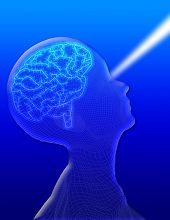
For up to date information on how to heal and prevent Traumatic Brain Injury, go to http://www.brainline.org
Synaptically yours,
Dr. G.
|
Tags:Advances in Neuroscience, Brain Science, Meditation with Poetry, Poetry Therapy, Right/Left Brain Therapy, Rudyard Kipling, Self Improvement, Traumatic Brain Injury
Posted in Advances in Neuroscience, Brain, Brain Training, Cognitive Science, Meditation, Mind/Brain Training, Neuro-Aesthetics, Right/Left Brain, Somatic, Whole-Brain Neuroscience | 2 Comments »
November 19, 2008
The Twitter: “We remember to sleep so we can sleep to remember!” — William Fishbein
The Big Idea: Sleep is a prime protagonist in the story of neurogenesis!
Sleep. Aaah, what a beautiful thing!
Yet when we mere mortals are deprived of our zzzzss, we get cranky and frustrated, if not downright nasty in negotiating simple tasks like adding numbers on a grocery bill or attempting to avoid freeway gridlock by rerouting a shorter drive home! Talking to a local Starbucks barista, I learned having no sleep is “way worse than getting sick!”
I’m not sure researchers at Neuroscience 2008 have tackled the nuances of that claim, but of those who are working in the sleep research field, sleep in all of its blessed and disturbed varieties –uninterrupted, interrupted, fragmented – along with napping, is being explored with new enthusiasm.
Looking back on his long career in sleep research, William Fishbein at City University in NY, remarked how far and expanded the field of sleep research had become. Speaking on a press panel of distinguished sleep researchers, Fishbein presented data that pointed up to our neuro-cognitive need for naps. What do naps actually accomplish? Fishbein and colleagues showed that a snooze siesta reinforces the neural networks formed during morning hours devoted to relational (or associative) learning!
As previously reported on this blogsite, napping has moved front and center into the discussion of high performance and human productivity. Fishbein’s research adds to the richly layered network of findings that suggest memory, decision-making, rote skill performance and the substrate of neurogenesis are enhanced with a rested brain, depleted with a tired brain.
The take home message? Sleep, like oxygen, is necessary for growth and survival of the human brain/body on Planet Earth!
Reporting from D.C. this is Dr. G. wishing you an uninterrupted good night’s rest.
Tags:Cognitive Neuroscience, Naps and Learning, Naps and Memory, Naps and Performance, Neurogenesis, Neuroscience 2008, Neuroscience of Sleep, Relational Learning, Siestas for the Brain, Sleep and Memory, Sleep and Performance, Sleep Research, SpaceSuit Yoga at Neuroscience 2008, William Fishbein
Posted in Advances in Neuroscience, Brain, Brain Training, Cognitive Science, Consciousness, Contemplative Education, Human Physiology, Mind/Brain Training, Neural Networks, Neuroscience, Whole-Brain Neuroscience | 2 Comments »
November 1, 2008
The Platform: NeuroLeadership Summit 2008, Day 2, afternoon proceedings
The Twitter: Changing brains, changing culture, one thought leader at a time!
The Big Idea: Brain-Based Coaching facing its own new frontier!
When the functional anatomy of the brain and the central nervous system was first studied by Dr. Thomas Willis (a student of the empiricist John Locke), the intellectual mindset of 18th century British society was hardly ready to think in terms of broad evolutionary and developmental change when it comes to brain/mind relations. After all, the radical ideas of Darwinian genetics and Freudian psychoanalysis wouldn’t surface until a century later and the modern models of cognition, emotional intelligence and creative problem solving would have to wait for the information age to come about.
With history as a backdrop, the afternoon of the NeuroLeadership Summit (Day 2) focused broadly and deeply on the frontier of neuroleadership. Like any pioneer in applied science, brain-based coaches and thought leaders must face the big question:
What are the implications of bringing neuroscience to bear on the culture of leadership practiced around the globe?
Lunchtime keynote speaker Dr. Karen Stephenson penetrated the issue by zeroing in on the subtle and insidious problems that plague executive communication practices: “What can neuroscience study tell us about the brain-dynamics of “trust”?, Stephenson asks. As an anthropologist and noted “pioneer” in social network approaches to advancing corporate culture, Stephenson illustrated the large gap in understanding how “trust” figures into executive communication patterns by comparatively looking at other social networks flowing underneath the radar of top-down corporate speak.
Stephenson, in other words, did not offer a neuro-anthropological view but rather brought the topic of social systems analysis to bear on the discussion of applied neuroscience. And Stephenson was not alone. Culturally sensitive systems thinking pervaded Dr. Brent Oberholtzer’s commentary on international consulting, especially in cases where U.S. companies set up shop in cultures with remarkably different epistemic values in problem-solving. Given the decades of culture wars and post-colonial critique leveled against Western Civ., and in light of the burgeoning of the Asian market, one really starts to wonder if the brains of American business leaders are just stuck in the neurochemical default mode: FEAR.
Rethinking the paradigm and strategies of “executive talent management” thus requires time and money and in the world of coaching, scalable, verifiable, cost-effective strategies can easily guarantee a coaching account. R. Scott Ridley at American Express and Christine Williams at NASA offered choice commentary on the positive effects of “brain-based” coaching in their respective leadership development programs: Each cited the cost efficiency of coaching with neuroscience fully in mind. As Williams noted, simply educating NASA scientists in the basics of neuroscience gives them a verifiable template for reframing pleasure, pain, and fear. By bringing in one hard science to bear on another, it maximizes the potential for self-awareness and “insight” in a non-threatening manner, and in the end. teaches leaders to lead by coaching!
The Take Home Message for Day 2: In Brain-Based Coaching, there are specific means to specific ends.
David Rock, reflecting upon his brand of brain-based coaching (there are others as this blog itself suggests), closed the session with a manifesto for establishing the scientific ground and rhetorical logic of a brain-based coaching practice. As one who clearly and passionately walks his talk, Rock, the visionary thought leader recognizes the pitfalls of developing a new field. His buzz words? “Remove Redundancy!” “Maximize Efficiency and Interactivity!” “Create Sustainability!” As the two day conference revealed, the semantics of quantum physics, systems analysis, information processing and most of all the neuroscience insights into cultivating emotional intelligence by means of mindfulness practice pervade Rock’s paradigmatic thinking about coaching a new generation of leaders.
As the founding director of the GGI, an institute ground on remarkably similar values, I am moved to have discovered a kindred spirit who brilliantly and generously lights the way for others.
A Rock caveat: Teaching the skill of “reappraisal,” and helping people cultivate “insight” speaks to the core logic of the neuroleadership coaching narrative. And yet the two neuro-ed-psych motifs may be the only piece of leadership training that can stick in corporate culture at this time. “Self-awareness,” after all, is “unbelievably hard to improve” amongst corporate leaders.
Well, as the old saying goes, Rome wasn’t built in a day. And as it was noted in passing during the summit proceedings, the story of the neuroscience is ironically implicated in the fall of the Roman Empire. The culprit? Environmental lead poisoning in the brain.
Ah…. the interdependency of all things.
Synaptically and Mindfully yours,
Dr. G.!
Tags:Brain Based Coaching, Business and the Brain, Christine Williams at NASA, Coaching Corporate Leaders, David Rock, Developing Leaders in Corporate Culture, Dr. Brent Oberholtzer, Dr. Karen Stephenson, Dr. Thomas Willis, Emotional Intelligence and the Brain, Global Coaching Services, Insight Meditation, Mindfulness lowers stress, R. Scott Ridley at American Express, SpaceSuit Yoga and NeuroLeadership, Talent Management Coaches, The George Greenstein Institute and the brain, The NeuroLeadership Institute
Posted in Advances in Neuroscience, Brain, Brain Technologies, Brain Training, Emotional Intelligence, Mind/Brain Training, Whole-Brain Neuroscience | Leave a Comment »
October 31, 2008
The Platform: The NeuroLeadership Summit, 2008, NY, morning session
The Twitter: Chocolate, Sex and Bonding with Mommy light up the same area of the Brain!
The Big Idea: The Brain responds in a similar way to physical AND social reward.
The morning session of NeuroLeadership Summit, Day 2 was devoted to the questions concerning the brain and the social world, especially the implications of neuroscience for the field of leadership and leadership development. Looming before an unwitting audience of the keenly business minded were the scientific and ethical questions of reducing scientific research to “brain phrenology” and it worse, running with information that is only “partial” to create a new “trend.” Diane Coutou, senior editor at the Harvard Business Review came out strong as a critic of egregious and misguided entrepreneurialism — citing the skepticism neuroscientists have in reducing a still burgeoning science to brand and product.
While I applaud Coutu’s warning, one can hardly blame a smart, cosmopolitan audience for being attracted to the novel aspects of brain science, especially when we are told by scientists like Matthew Lieberman that bonding and social rewards have as much impact on the brain as chocolate or money in a (stable) bank. Lieberman, who runs a social neuroscience lab at UCLA, entertained the audience with FMRI studies, that tested neurochemical response to the pain and pleasure that comes in relations to playing social games and social group relations: Categories of interest:
The brain correlates to thoughts and feelings we have when we are left in or out of a game.
The brain correlates to thoughts and feelings we have when we are given an ultimatum, especially if the ultimatum hinges on “fairness”?
From Lieberman’s talk emerges a clear thought: If gaming (play) is the work of children, here we learn that childhood is our training ground for gaming in life.
Lieberman’s point: The Brain is designed for learning to engage in social groups, having social relations, for recognizing social pain and reward. He even went on to say that from the social neuroscientific perspective, the brain appears predesigned for social relations, especially if one considers the role early bonding plays in the basic physical survival of the human species.
Break Out discussions addressed the implications for both business and education. In the education session, Renee Rolleri offered a plea for a progressive brain aware, creativity model for education and discussed her own collaborative efforts in designing a new charter school, The BLUE SCHOOL which she co-founded with the members of The Blue Man Group!
More on implications later today.
Synaptically yours,
Dr. G.
Tags:Brain Based Coaching, Brain-Based Leadership, Business and the Brain, Diane Coute, Harvard Business Review, Mattew Lieberman, NeuroLeadership Summit 2008 NY, Neuroscience and Advertising, Neuroscience and Product Design, Neuroscience of Leadership, Renee Rolleri, Social Neuroscience Lab UCLA, The Blue Man Group, The Blue School, The Brain and Social Rewards
Posted in Advances in Neuroscience, Brain, Brain Training, Cognitive Science, Creativity and the Brain, Mind/Brain Training, Neuroscience | Leave a Comment »
October 29, 2008
The Platform: NeuroLeadership Summit 2008: Opening Keynote Address
The Twitter: WOW!!!!!!Quantum Mechanics Dates Neuroscience and finds an attractive mate!!!!!!
The Big Idea: Attention Changes the Brain as understood from the standpoint of Quantum Mechanics….
Yawzaa! Talk about brain training for neuro-leaders at the quantum level!!!! The first night of the NeuroLeadership Summit 2008 in New York City has blown everyone’s mind with a turbo charged presentation by Jeffrey Schwartz, M.D., UCLA and his mentor, the visionary Quantum Physicist and Author Henry Stapp. Schwartz, who appears to nearly jump out of his skin with enthusiasm when speaking, uses baseball metaphors for delivering “fast balls” on the question of “attention” in Q.M. Schwartz’s key point? Bringing neuroscience and Q.M. together in a unified field theory over-rides the inadequacies of Newtonian physics in coming up with plausible mathematical formula and explanation has to how we can observe and understand, with reasonable veracity, the movement of large bodies, like the human body.
The nearly two-hour presentation called for a deep deep think on the part of this observer and begs for a gorgeous visual map to point to the multiple vectors of interrelated ideas. Forgive me then, in this brief period of online time to outline the team’s main points concerning a new way to discuss neuroplasticity to an audience focused on the question of leadership, be it in business, education, government or related areas of human learning and enterprise:
1. The Marriage of Quantum Mechanics with Neuroscience: The marriage challenges the Newtonian model of physics, which leaves out the role of the observing agent, the agent that poses questions about the phenomenal world. In the Newtonian model, there is a purposeful blindness imposed upon the role the observer and his or her tools of observation play in influencing the inquiry and observation… hence, the Newtonian science of refutation and double-blind experiments.
2. The Role of Interactivity between the Observer and the Observed: The Neuro-Q.M. theory takes off the self-imposed empirical blinders and moves the question of information gathering and observation to address the interactive aspect of inquiry and observation. In this model, interactivity between “the observer and the observed” helps to create the potential answer to the question posed. Sound familiar, somanauts?
3. Invoking Attention Density and the Executive Action Template create the conditions for interactivity of the observer with the observed.
Definitions first:
What is Attention Density? Distinct from “concentration,” attention density involves repetition of attention, as in learning a new skill, like learning to swim, learning to read, learning to eat only one piece of chocolate, or even learning to recover from a stroke!
What is the Executive Action Template: This term refers to the executive functions — analytic difference detecting, syllogistic reasoning and decision making — correlated with activity in the Pre Frontal Cortex of the human brain.
Schwartz and Stapp argue for the role of the “impartial observer” — the observer who uses “attention” — and this is important — specifically, the repetition of attention plus the engagement of intentional executive action to pose questions in an interactive fashion with the phenomenal world and thus discover/create a possible answer to the questions posed.
In other words, for Schwartz and Stapp claim Attention Density and Executive Action are said to be the two determining factors in creating the conditions for the impartial observer and the conditions for the moment probability collapses into a unit of possibilty or “an answer.” Now there is a complex Q.M. theory of how this actually works and I’ll leave it to you dear readers to start doing your own interactive search to learn about the necessary correlation between “attention density” and the “collapse function” in Q.M.
The implications for Neuro Leaders? Schwartz and Stapp point to a radical and “rational” rethinking of leadership and organizational systems models by suggesting:
1) The lessons of neuroplasticity: One can now acknowledge the fact of neuroplasticity — the brain creates the mind and the mind creates the brain — and how it is generated and conditioned by asking questions, by being curious, by the act of paying repeated attention, by making inquiry, by learning and sharing information;
2) Bottom Up Flow of Information: By recognizing the Neuro-Q.M. theory of probability, one can begin to value bottom up information flow. Workers are not mindless cogs in a machine but rather brain/mind attentive information “workers.” (To better understand the bottom up theory of info flow, check out Steven Johnson’s EMERGENCE: a great study for neuro leaders who wish to take lessons from developing ant colonies, developing cities, developing brains and open systems software practices!)
3) Neuro leadership is hall-marked by invoking a brain based/quantum understanding of the role of attention, interactivity and decision-making in all aspects of human performance. The Schwartz/Stapp model encourages us to take seriously the interactive possibilities of the brain in relation to the interactive possibilities posed by the use of our other research tools, be it a gene splicer, a sub-atomic particle accelerator.
There is so much more to say but time is running out. Let it be noted that the ghost of dualism clearly plagued the presentation as did the mechanistic semantics of Newtonian physics, e.g., Stapp referring to humans as machines.
‘Oi Vey.’ I will take that one on in another blog.
More tomorrow. Until then, attentive breath be with you!
Dr. G.
Tags:Attention Density, Brain Creates Mind, Executive Decision Making and the Brain, Henry Stapp, Jeffrey Schwartz, Mind Creates Brain, Neuro Leadership Summit 2008 NY, Neuroplasticity, Neuroscience of Attention, Neuroscience of Business, Neuroscience of Leadership, Neuroscience of Learning, Physics meets Neuroscience, Quantum Mechanics, SpaceSuit Yoga and Neuro Leadership, The George Greenstein Institute, The Impartial Observer and Brain Science
Posted in Advances in Neuroscience, Body, Brain, Brain Training, CERN, Consciousness, Cosmic Wonder, Mind over Matter, Mind/Brain Training, Mindfulness Practice, Neuroplasticity, Quantum Mechanics | 2 Comments »
October 27, 2008
Dear readers,
News on the home front;
First, commentary continues to flow from Dr. Jill Bolte Taylor’s talk on Oprah. A neuro-leader if there ever was one. Please enjoy the discussion that ensued on this site.
One of the questions to arise: Should we be devoting our lives to training our brains for bliss, or should bliss pursuits be relegated to the cloistered arena of mystical experience? Of course, the dualist framing of the question is unfortunate for as Taylor herself points out, right-brain enhanced joy is not licenced or owned by religious seekers. Think of the pattern recognition operations that go on in the mind of painters or fabric designers?
For those interested in a critical, psychological analysis of American mystical experience, try starting with a standard and truly royal read: William James’ VARIETIES OF RELIGIOUS EXPERIENCE. James, the father of American psychology and a spacious thinker on the question of brain-mind relations, takes one on a tour of the diversity of American religiosity. Seems we in the U.S., have not strayed too much from our turn of the century predecessors.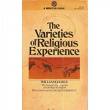 As James is one of my favorite American thinkers, I can’t help but think he would be totally turned on by the big movements in neuroscience and neuro-education — the sort Taylor insinuates in using neuro-anatomy to tell her deeply personal story of survival and transformation! I only wish James were alive today to join me at the upcoming 2008 Neuroleadership Summit in NY. I will be blogging on the event — and upon my return will be offering my services to those looking for consultants to design and set up neuroleadership and neuro-fitness programs in their companies and institutions
As James is one of my favorite American thinkers, I can’t help but think he would be totally turned on by the big movements in neuroscience and neuro-education — the sort Taylor insinuates in using neuro-anatomy to tell her deeply personal story of survival and transformation! I only wish James were alive today to join me at the upcoming 2008 Neuroleadership Summit in NY. I will be blogging on the event — and upon my return will be offering my services to those looking for consultants to design and set up neuroleadership and neuro-fitness programs in their companies and institutions
In the meantime: to embolden your own neuro-leadership program, try and practice a few of the basic “brain tips” mentioned on this site:
Mid-day napping
Bringing breath awareness to your athletic or other human performance training
Spinal rolls: juicing up the joints of the spine for greater blood and chi flow!
And a new one to be discussed in future blogs: Think Popeye and eat your spinach!
May the Breath Be With You!
Dr. G.
Tags:Brain and God, Jill Bolte Taylor, Jill Bolte Taylor at TED, Jill Bolte Taylor on Oprah, Mystical Experience and the Brain, Neuro-Leadership, Neuroleadership Summit, Psychology of Religion, Right Brain Bliss, Right Brain Religious Experience, SpaceSuit Yoga and the Brain, The Varieties of Religious Experience, William James and Neuroscience, William James and Religious Experience
Posted in Brain, Brain Technologies, Brain Training, Cognitive Science, Jill Bolte Taylor, Mind/Brain Training, Neuro-Aesthetics, Neuroplasticity, Neuroscience, Religion and the Brain, Right Brain Bliss, Right/Left Brain | 2 Comments »
October 15, 2008
Twitter feed from NPR:
Yesterday (Oct 13) NPR reported on the success former amputee Dave Savage is having in adapting to his new hand transplant. Do notice, the term “adaptation” here points to the capacity of Savage’s brain (and central nervous system) to remodel neural networks in order to operate his new hand.

Courtesy of Jewish Hospital, Kleinert Kutz and University of Louisville
Savage’s story is rather touching, to say the least, and puts a kinder, human face on the harrowing Silver Spring monkeys epic that pushed neuroscience into the study of neuroplasticity and neurogenesis.

For NPR’s report on the neural implications of Savage’s hand transplant, go to:
http://www.npr.org/templates/story/story.php?storyId=95593579
For the story of the Silver Spring Monkeys , see Sharon Begley’s discussion in TRAIN YOUR MIND, CHANGE YOUR BRAIN, or Jeffrey Schwartz and Sharon Begley’s narrative in THE MIND AND THE BRAIN.
And for readers of SpaceSuit Yoga, the implications: The lessons of neuroplasticity are so far-reaching as to push us all to rethink and recontextualize our work, our creativity, our lives with respect to the innate power of our brains.
Wonders never cease!
Dr. G.
Tags:Brain and Hand Transplant, Brain Training with Yoga, Change Your Brain, Mind and Brain, Movement and Brain Training, Neurogenesis, NPR Brain Report, Silver Spring Monkeys, SpaceSuit Yoga, Train Your Mind
Posted in Body Maps, Brain Technologies, Brain Training, Mind/Brain Training, Neuroplasticity, SpaceSuit Yoga, Uncategorized | Leave a Comment »
October 14, 2008
The Platform: Brain Rules by John Medina, Ph.D.
The Twitter: Catch some ZZZZZs!
The Big Idea: Become a Neuro-Leader: Provide 20 minute, afternoon brain rest periods for your students, workers or colleagues!
…. Picking up on my sleeping pod commentary, I wish to reinforce the idea of catching some “zzzzs” as an antidote to the rise in stress these days and add an important point: Whether or not you have access to a sleeping pod, practice Neuro-Leadership by creating structures within your institution to allow for “brain time outs Following brain development specialist John Medina, getting enough sleep earns its place as Brain Rule #7 in his 12 Brain Rules. Rule #8? “Stressed Brains Don’t Learn the Same Way.”
Following brain development specialist John Medina, getting enough sleep earns its place as Brain Rule #7 in his 12 Brain Rules. Rule #8? “Stressed Brains Don’t Learn the Same Way.”
 As Medina notes on his own website: “Your brain is built to deal with stress that lasts about 30 seconds. The brain is not designed for long term stress when you feel like you have no control.”
As Medina notes on his own website: “Your brain is built to deal with stress that lasts about 30 seconds. The brain is not designed for long term stress when you feel like you have no control.”
Drawing an evolutionary comparison between facing a predatory saber-toothed tigers and your boss or a bad marriage, Medina pinpoints the effect: “You can actually watch the brain shrink.”
Shrinking brains might sound great as a 5th grade science project but for brains on fire from stock market quakes to the prospect of reorganizing a new world order, an expansive brain sounds more like what the doctor ordered. Medina’s prescription for avoiding chronic stress? Sleep well, think well and take an afternoon nap to improve mental and physical performance.
For years, I have manuevered around an academic schedule, eeking out 20 minutes of meditation before the start of a 4 p.m. seminar. My method: hit the steam baths and “work out” before class. Days without class, I schedule in an afternoon yoga nidra session.
What is yoga nidra? Simply put, yoga nidra is an ancient technology of deep relaxation, often referred to as “waking sleep.” It is one of the more beautiful restorative practices from the hatha yoga tradition, enabling rest while staying conscious at a subtle and quiet level of awareness. Significant neuroscientific studies of yogic meditation date back to the late 1960’s and today, the National Institute of Health within the U.S. is devoting research interest in the physiological and neuroscientific effects of yoga. It is worth noting that yoga nidra was included in the roster of week long yoga symposium topics covered at NIH in May 2008.
While Medina does address yoga nidra per se, he does emphasize the need for down time, a chance to enter the “Nap Zone” – that period during the hour of 2-3 in the afternoon, when as he says, “It’s deadly to give a lecture. More car accidents happen. Memory, attention and problem-solving suffer.” What accounts for the brain degrade? Charting the syncopated relations of ciradian and homeostatic sleep rhythms in our brain/body, Medina highlights the intersection — a crossroads that beckons the sleep.
Forget the candy bar or latte. Grab your yoga mat, your office sofa or place first dips on the new sleeping pod at work to re-calibrate your innate biological clock and set sparks to a new idea!
And as always breath be with you!
Dr. G.
Tags:Brain Rules, Improving Perfomance, John Medina, Nap Zone, Neuro-Leadership, Restorative Yoga, Sleeping Pods, SpaceSuit Yoga, Sports Training, Stress Reduction, Yoga and the NIH, Yoga Nidra
Posted in Body, Brain, Brain Technologies, Brain Training, Meditation, Mind/Brain Training, Uncategorized, Yoga | 2 Comments »
September 21, 2008
Quick Notice of Schedule change:
I just received word from Dr. Jill Bolte Taylor, noting her taped interview on the upcoming Sept 23 Oprah show is being postponed. No future date has been given.
As soon as I have word, I will be sure to share the updated news with all you somanauts!
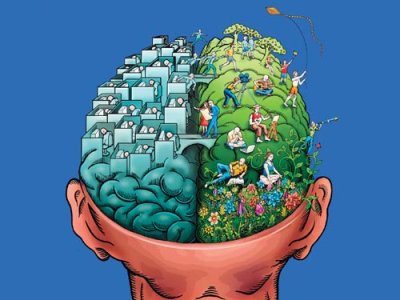
In the meantime, it’s reassuring to know that Dr. Taylor’s message has traveled wide and far as MY STROKE OF INSIGHT has been translated into 20 different languages! This is really important as translation brings to greater public awareness, the role contemporary neuroscience, and a personal commitment to healing plays in turning a tragedy into an inspiring story that uplifts and transforms other people’s lives.
Great week ahead! Stay Whole-Brained, Stay Hydrated and remember to Breath!
Dr. G.
P.S. Those interested in personal or corporate training in whole-brain health or neuro-leadership practices, please leave a comment or contact me through The George Greenstein Institute link (in the right hand column of this blog.
Tags:Balancing Right/Left Brain, Brain Injury, Jill Bolte Taylor, Meditation to Reduce Stress, My Stroke of Insight, Neuro-Leadership, Neuroplasticity, Neuroscience, Stroke, The George Greenstein Institute, Ways to Avoid Stroke, Whole Brain Health
Posted in Advances in Neuroscience, Balancing the Brain Hemispheres, Body, Brain, Brain Technologies, Brain Training, Breath, Meditation, Neuro-Aesthetics, Neuroplasticity, Right Brain Bliss, Right/Left Brain, TED 2008, Uncategorized | Leave a Comment »












